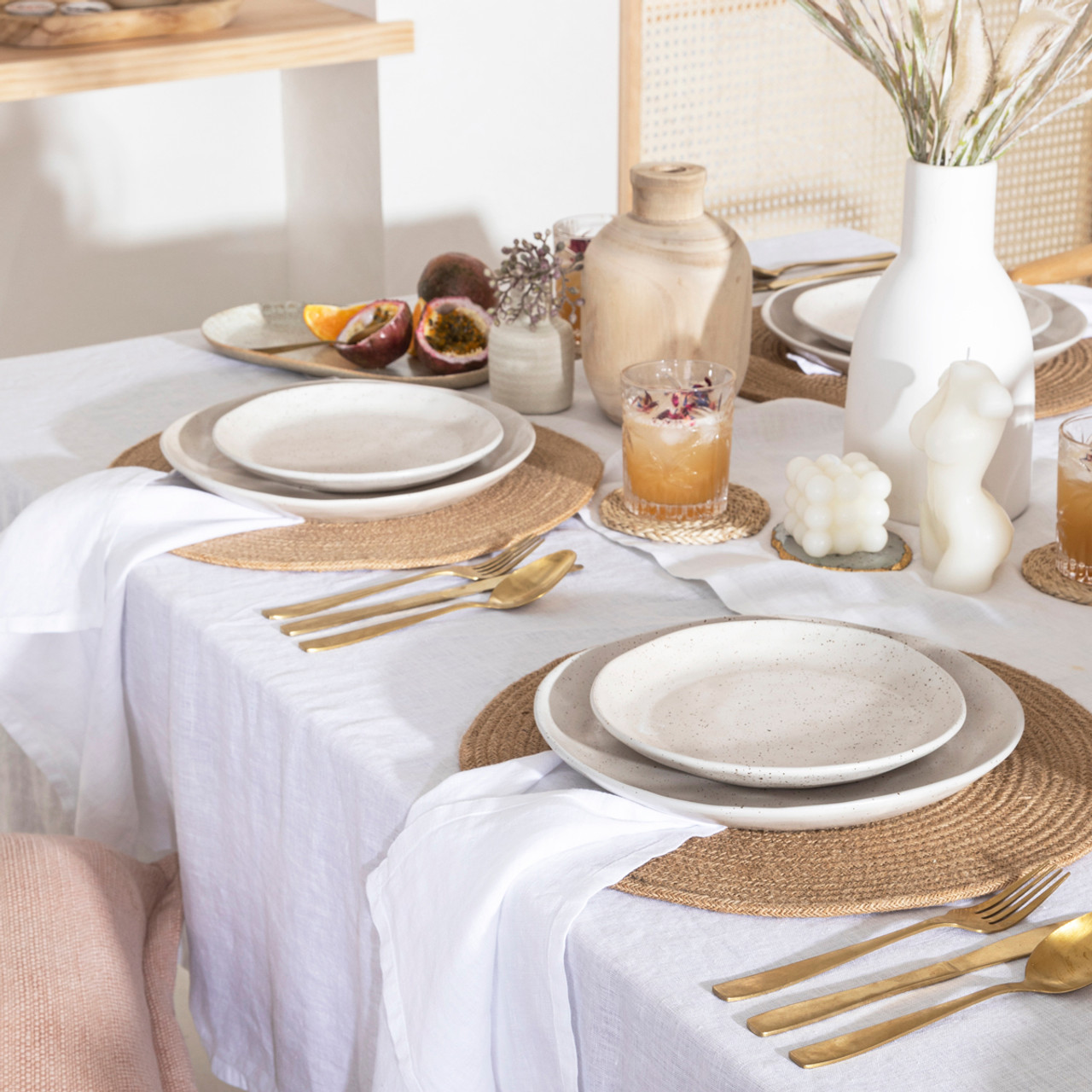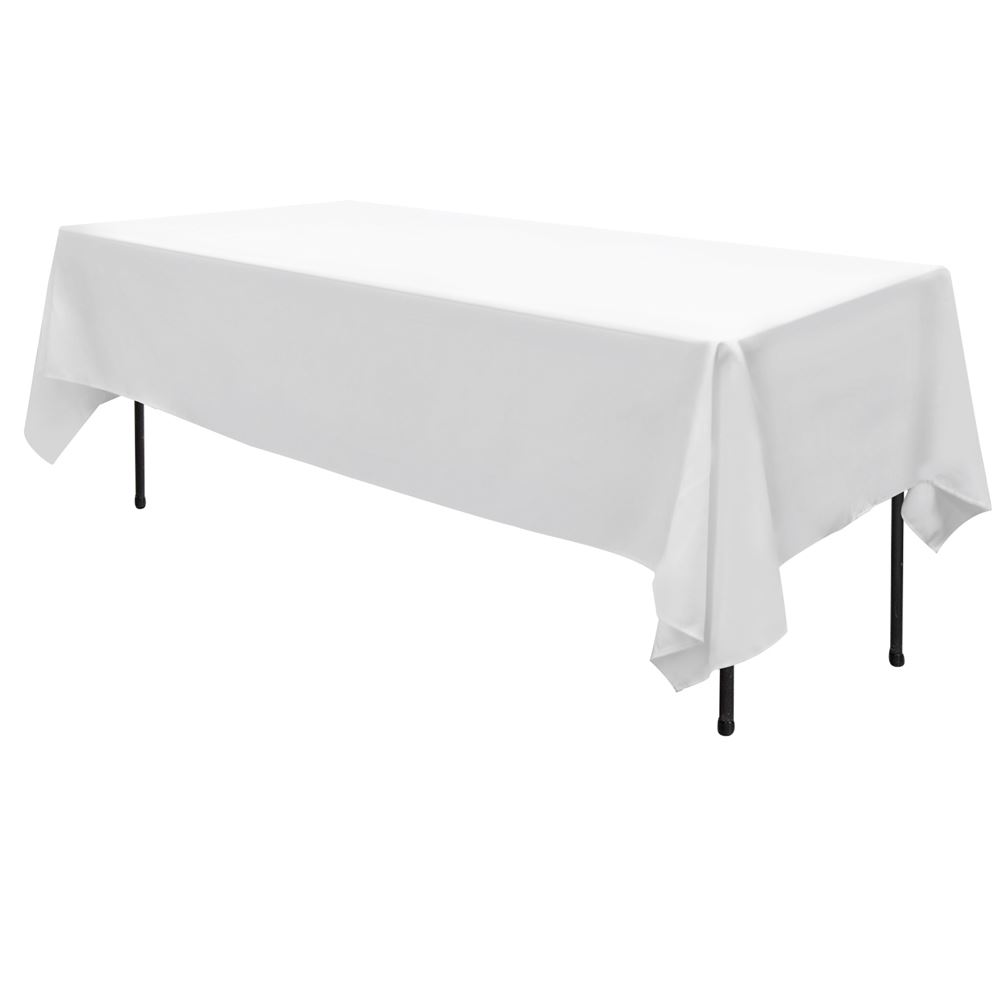Do It Yourself Table Runner Projects: Custom-made Layouts for Your Home
Do It Yourself Table Runner Projects: Custom-made Layouts for Your Home
Blog Article
Linen Material Developments: Exploring Modern Trends and Creative Applications in Design and Textile Market
From sustainable manufacturing approaches to cutting-edge weaving technologies, the advancement of bed linen is reshaping the landscape of the fabric industry. As we dig right into the worlds of innovative layout applications and the development of bed linen blends and hybrid fabrics, a new phase unfolds in which linen's function in future textile technologies takes facility phase.
Sustainable Practices in Linen Production
Lasting practices in linen manufacturing have become increasingly important in the fabric sector's initiatives to reduce ecological influence and promote ethical sourcing techniques. Bed linen, a natural fiber stemmed from the flax plant, provides a series of advantages such as sturdiness, breathability, and biodegradability. Nonetheless, typical methods of bed linen manufacturing can include considerable water usage, chemical use, and energy-intensive procedures.
To address these obstacles, several textile manufacturers are taking on lasting practices throughout the linen manufacturing procedure. This consists of sourcing flax from natural farms that prevent hazardous pesticides and chemicals, executing water-efficient retting techniques to remove fibers from the flax stalks, and making use of environment-friendly dyes and surfaces. Furthermore, some companies are purchasing sustainable power resources to power their manufacturing centers and lowering waste with recycling and upcycling campaigns.
Technical Developments in Linen Weaving
With the expanding focus on lasting methods in linen production, the fabric industry is now observing a rise in technical innovations specifically aimed at revolutionizing the art of linen weaving. These advancements are improving the way bed linen materials are generated, providing increased effectiveness, quality, and imagination in weaving techniques.
One of the crucial technological improvements in bed linen weaving is the combination of computerized looms. These sophisticated looms are furnished with software that allows for elaborate and intricate styles to be woven with accuracy. By digitizing the weaving process, makers can achieve higher consistency and accuracy in their bed linen fabrics.
Additionally, improvements in thread spinning innovation have actually allowed the manufacturing of finer and more sturdy bed linen threads - table cloths. This results in softer and smoother bed linen materials that maintain their quality even after numerous usages and laundries
Furthermore, the growth of environment-friendly dyeing procedures and surfaces for bed linen materials is obtaining grip. These lasting practices not only minimize the environmental effect but also satisfy the boosting customer need for ethically created textiles.
Creative Design Applications for Bed Linen
Ingenious creative strategies are significantly forming the innovative layout applications for linen in the fabric industry. Bed linen's natural visual appeal and capacity to blend with various other textiles make it a favorite selection for developing distinct garments and accessories that cater to the environmentally conscious customer.
In addition, developers are trying out linen in home style, utilizing its breathable and resilient nature to craft elegant furnishings such as drapes, bedding, and furniture. The structure and drape of bed linen bring a sense of class and convenience to interior rooms, including a touch of beauty to contemporary homes.

Bed Linen Blends and Crossbreed Fabrics

Crossbreed textiles, on the various other hand, take the idea of mixing an action further by including extra aspects such as metal strings, recycled materials, or conductive fibers. These cutting-edge textiles not just broaden the style opportunities yet also introduce practical elements like conductivity, antimicrobial properties, or enhanced durability. Hybrid materials are increasingly being utilized in different markets, including fashion, interior design, and technical fabrics, where the need for multifunctional products gets on the rise.
Bed linen's Duty in Future Textile Innovations

In the realm of future textile innovations, linen is expected to be an essential gamer in the growth of advanced functional textiles. Designers and researchers are exploring methods to improve bed linen's intrinsic high qualities with technological innovations, such as integrating wise fabrics, nanotechnology, and efficiency coatings. These advancements aim to boost linen's performance characteristics, making it suitable for a more comprehensive variety of applications, from activewear to safety clothes.
In addition, the mix of linen with various other all-natural or synthetic fibers opens up countless possibilities for creating novel fabrics with unique homes and capabilities. By leveraging linen's features and exploring cutting-edge blends, the textile market is poised to introduce interesting advancements that accommodate advancing consumer demands and sustainability needs.
Verdict
In conclusion, the expedition of lasting techniques, technical improvements, imaginative style applications, bed linen blends, and its function in future textile technologies highlight the constant development of linen textile in the modern-day layout and fabric industry. With a concentrate on technology and imagination, the versatility and green nature of bed linen make it a useful product for developers and makers alike, leading the way for additional growths and innovations in the field of fabrics.
As we dive into the worlds of creative style applications and the introduction of linen blends and hybrid materials, a brand-new chapter unfolds in which linen's role in future fabric innovations takes facility stage.
Discovering the fusion of linen with various other fabrics has actually led to the introduction of ingenious blends and crossbreed fabrics in the contemporary textile industry. Bed linen blends supply an one-of-a-kind combination of the qualities of linen with those of other fibers, resulting in textiles that possess boosted residential properties such as enhanced sturdiness, boosted draping, and minimized wrinkling.The evolution of linen blends and crossbreed fabrics has actually established the stage for Bed linen to play a crucial role in driving future fabric advancements.In the world of future fabric developments, linen is anticipated to be an essential player in the development of innovative functional materials.
Report this page